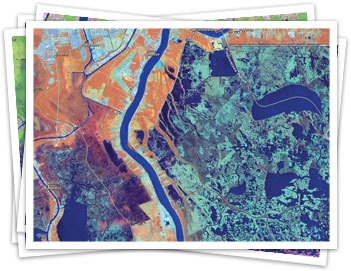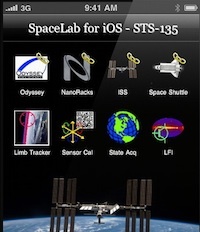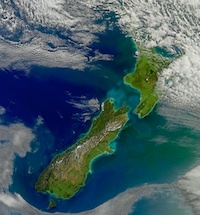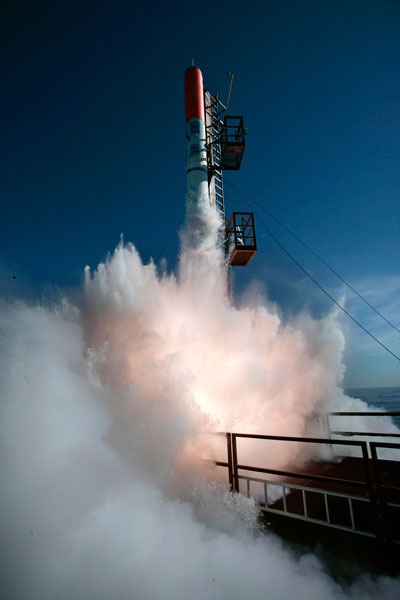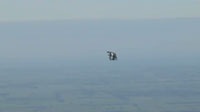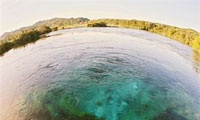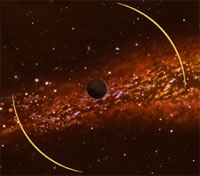Over 4 terrabytes of images covering the entire planet have been released to the public by ESRI and to US Department of the Interior, providing almost 40 years of data to researchers.
Esri and DOI Introduce Landsat Data for the World, esri.com (3 May 2011)
Working in close collaboration with the US Department of the Interior (DOI), Esri is pleased to announce the release of Landsat image services. These provide access to almost four decades' worth of Global Land Survey (GLS) Landsat data developed by the National Aeronautics and Space Administration (NASA) and DOI's US Geological Survey. Esri provides access to the full multispectral, multitemporal Landsat data for free on ArcGIS Online as dynamic image services.
Check out the website for more information: http://www.esri.com/landsat-imagery/index.html.
First iPhones in Space Launching on Last Shuttle Mission, Space.com (10 June 2011)
Two iPhone 4 smartphones loaded with an app to help astronauts perform experiments in space will launch aboard NASA's shuttle Atlantis on July 8. They will be the first iPhones to fly in space, officials say.
Mark's Comments: All I can say is, finally! Sure, Androids and iPhones have gone up in rockets and balloon, but that's low altitude. We finally get to see some decent technology floating around the space station, not the boring looking IBM ThinkPads. Yes, I'm definitely a apple-fan.
Now what they really need of course is the iPad. Every decent sci-fi movie since Star Trek has had crew members walking around the spaceship or space station with an iPad-like device.
But they'll be doing real experiments with the iPhones. A number of applications have been built to test gyroscopes, use the camera for navigation, etc. So it's not all fun. Although you do have to wonder if along with the 'official apps' they also have a copy of Angry Birds installed on there, or the Space Shuttle Landing simulator ... although that obviously has limited value now. I wonder if they do get to play games in their down-time? I bet the number of tweets would go up substantially. Maybe some planking in space photos?
According to the article, the iPhones will be returning to earth on a Soyuz later in the year. But you seriously have to wonder whether the astronauts will want to keep them.
I wonder if there is potential to have the iPhones become more of a standard experiment platform? You can imagine for life-science data collection it would be great, especially if you pair it with sensors along the Nike Sport Kit. Perhaps students could design apps that have literally a few days of experimental use.
This stunning image was acquired by NASA's Aqua satellite, capturing New Zealand in spectacular colour, surrounded by clouds.
Turbid Waters Surround New Zealand, NASA Earth Observatory (2011-05-28)
Runoff from heavy rains, combined with wave action along the coast, increased the turbidity of New Zealand’s waters when this image was acquired on April 29, 2011. The Moderate Resolution Imaging Spectroradiometer (MODIS) on NASA’s Aqua satellite captured this view of sediment flowing in the Pacific Ocean.
Download full-size image (20MB).
Here's an article about a project a few friends of mine are involved with over in Australia. Because, everyone needs broadband...
Antarctica to get satellite broadband, ABC Science (2011-05-12)
The project aims to serve the growing output of research communities working in the Australian Antarctic Territories, says Antarctic Broadband project manager Michael Brett.
...
Current communications in the Antarctic are patchy and insufficient for the needs of the research community, says Brett.
Check out the project website: www.antarcticbroadband.com.
This is an old article I recently found, but I thought i'd share the image, which I think is kinda pretty:
Kiwi found in outer space NZ Herald, 2009-09-28
An astrophotographer has discovered a Kiwi in outer space from New Zealand's internationally renowned Mt John Observatory.
It may be 26,000 light years away, but a high powered astro-photograph has picked up the distinct image of New Zealand's national icon in the centre of the Milky Way Galaxy.
...
Update - 11 June 2011: I received an email from a colleague that informed me that Fraser Gunn was not the first to discover this image, but rather that the first person to name the kiwi was Ian Cooper around the year 2000.
Carter Observatory in Wellington commissioned John Drummond to produce a photograph for one of their exhibits. It was also featured in 'Milky Way Kiwi' magazine, published on 25 September 2009.
I was lured in by a "must see keynote" headline on a blog I followed, and ultimately ended up watching and thoroughly enjoying this fantastic keynote, presented by Jeff Greason at the ISDC 2011 Conference just recently:
Mark's comments:
I have to say, that while he is clearly pushing off-world colonisation, I really enjoyed his analysis of NASA's current strategy and his recommendations.
I personally feel that it is flawed to have any one nation pursue a colonisation strategy, and that somehow we need to change the conversation so that it becomes a 'planetary goal'. Having that built into each space-faring nation's strategic goals would make sense, and it would be far more viable, productive, and cost-effective than any one country trying to go it alone, for glory or national supremacy. It is very unlikely that a trade-route to an off-world destination will be cost-effective for a single country (although some asteroids do hold the potential to change this), but providing a "backup for humanity" in a second habitat does make sense.
Copenhagen Suborbitals successfully launched their rocket HEAT-1X on Friday 3 June at 4:32pm (CEST, 2:32am NZST). The rocket reached an altitude of approximately 2.5km, lower than hoped, but proved the amateur rocket builders are on the right track.
The rocket is designed to carry a single person into space and back, giving them a great view of the trip from a dome on the rocket's nose. This first test launch carried a 50%-weight dummy, and had hoped to reach 10 miles high. According to early reports, the motor was shut off by remote control as the rocket began to veer off course. The rocket was recovered, but suffered minor damage due to the main parachute not fully opening.
The vehicle was launched from a floating platform, which was towed by the group's private submarine, to a location off the Baltic island of Bornholm.
Despite not achieving all the goals, this launch is a triumph for the amateur group, which cost around $70,000, been funded by sponsorship and donations.
News coverage:
- Danish Amateurs Launch Homemade Rocket, Aim for Future Spaceflight, Space.com
- Bornholm rocket flies high, Copenhagen Post
Video of the launch (5min)
Extended Video of the launch (11min)
(Limited English voiceovers).
Jetpack creator's new high, NZ Herald (29 May 2011)
... the flight near Ashburton was piloted by remote control, with a crash-test dummy in the pilot's position. The machine flew to 5000 feet, then down to about 2000 feet before firing a rocket-propelled parachute. From there it sailed safely to the ground without damage.
Martin Jetpack 5000ft flight - highlights, NZ Herald (29 May 2011)
—
Mark's note: This is a fine example of NZ ingenuity in the aerospace sector. And it runs on ordinary gas! I so want one of these once they come on the market...
Govt puts $9.3m into fresh water research, NZ Herald (1 June 2011)
The money is going into two research projects.
One will pioneer techniques for understanding groundwater, such as satellite remote sensing and the use of seismic signals from earthquakes.
Govt backs fresh water research projects, National Party Website (1 June 2011)
Smart aquifer characterisation: Subject to satisfactory science peer review, the Crown research institute GNS Science has been awarded $1.2 million a year for six years to develop a suite of innovative methods for characterising and mapping New Zealand’s groundwater systems.
...
The research team will apply new methods to overcome the current problems of data acquisition that are time- and resource-consuming, and develop specialised skills in hydrogeology, geology, satellite remote sensing, geophysics, seismology, mathematics and spatial information technology.
Free-floating plants may be more common than stars, NASA (18 May 2011)
The discovery is based on a joint Japan-New Zealand survey that scanned the center of the Milky Way galaxy during 2006 and 2007, revealing evidence for up to 10 free-floating planets roughly the mass of Jupiter.
MOA, Microlensing Observation in Astrophysics – Canterbury University project page
